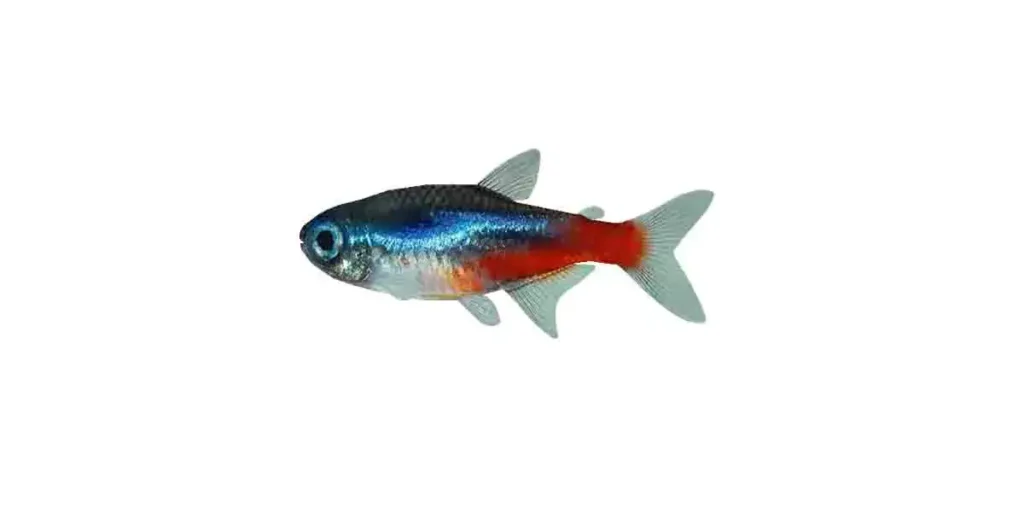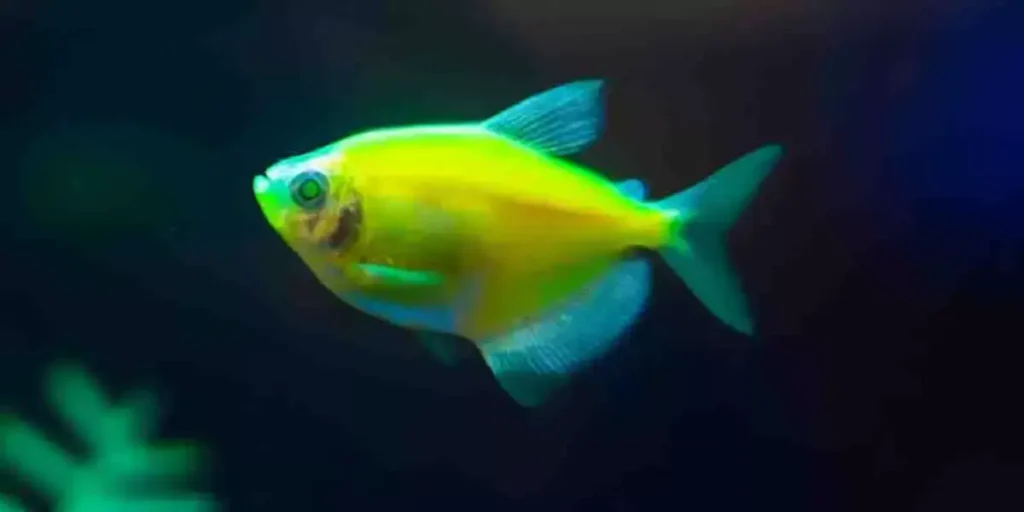The widow fish, a member of a marine creature family, inhabits oceans worldwide, captivating researchers and marine enthusiasts with its fascinating characteristics and presence in aquatic ecosystems.
This fish possesses a sleek, elongated body and distinctive coloration, allowing it to navigate diverse ocean environments with ease. A notable attribute of the widow fish is its remarkable camouflage ability, which aids in both defense against predators and efficient predation.
While it typically prefers a solitary lifestyle, occasional sightings of small groups have been observed. The widow fish showcases exceptional hunting skills, relying on its agility and speed to capture prey such as smaller fish and marine invertebrates.
Throughout its life cycle, it undergoes distinct developmental stages, starting as tiny larvae and undergoing metamorphosis into its recognizable adult form. By studying its behavior, physiology, and ecological significance, researchers contribute to a deeper understanding of the complex marine interactions and the diversity of thriving oceanic life.
In summary, the widow fish’s captivating appearance, camouflage capabilities, solitary nature, and intriguing life cycle make it a fascinating subject of scientific exploration, shedding light on the wonders of marine ecosystems.

The main objective of this comprehensive article is to provide readers with a meaningful and detailed examination of the English name of widow fish. Throughout the article, we will delve into various aspects such as price, health benefits, nutrition facts, different types, recipes, popularity, and availability of widow.
By exploring these subjects, readers will gain valuable information and insightful perspectives, enriching their comprehension of this fish variety. Our goal is to present the information in a comprehensive manner that enhances readers’ understanding of the widow fish
| Kingdom | Animalia |
| Phylum | Chorodata |
| Class | Actinopterygii |
| Order | Characiformes |
| Family | Characidae |
| Genus | Gymnocorymbus |
| Species | G .ternetzi |
All About Widow fish

The black tetra fish, commonly known as the widow fish, is a captivating aquatic species that has gained global recognition. Belonging to the Characidae family, these fish possess a distinct body structure that draws the attention of anglers, aquarists, and enthusiasts worldwide.
Native to various regions, including South America, the black tetra fish has become a subject of fascination due to its stunning appearance and peaceful nature. Thriving in freshwater habitats, these omnivorous fish exhibit a range of captivating colors and patterns, adding to their allure.
They typically feed on small invertebrates, plants, and occasionally consume small aquatic insects. Black tetra fish are highly sought after by aquarium enthusiasts for their beauty and are a popular choice for community aquariums. Their peaceful demeanor and striking appearance make them a favorite among hobbyists looking to add vibrancy to their aquatic setups.
Colors of widow fish
The widow, commonly referred to as the black tetra fish, possesses a captivating range of colors that contribute to its overall charm and appeal. While the base coloration of the widow fish typically falls within the brown or gray spectrum, it displays a remarkable ability to exhibit a diverse array of vibrant hues and intricate patterns, rendering each individual colored widow fish truly unique in appearance.
Certain species, such as the Channa andrao, showcase a captivating blend of metallic shades, including iridescent blues, greens, and shimmering gold or copper tones. These striking colorations not only provide effective camouflage within their natural habitats but also make them highly sought after by aquarium enthusiasts who appreciate the beauty of colored widow fish.
Additionally, specific species of colored widow fish, like the Channa bleheri, exhibit a stunning combination of red, orange, and black markings, creating a visually captivating display. These bold and contrasting colors not only enhance their allure but also serve important purposes in their natural behaviors, including communication among individuals and territorial displays.
It is intriguing to note that the color patterns and intensity of colored widow fish can vary among different populations and even within individuals of the same species, influenced by factors such as age, gender, and environmental conditions.
Shape of widow fish
The black tetra fish, commonly known as the widow fish, showcases a distinct and captivating body shape that distinguishes it from other aquatic species. Its elongated form, resembling a slender tetra, contributes to its agile and graceful swimming abilities.
With a streamlined profile and sleek body structure, the black tetra navigates effortlessly through water, making it an adept predator. Well-developed fins and a tail fin enhance its propulsion and maneuverability.
This unique shape reflects the black tetra fish’s adaptation to freshwater habitats, enabling it to thrive in diverse aquatic environments. Beyond functionality, the fish’s elongated body and sleek design add to its aesthetic appeal, captivating fish enthusiasts and aquarists worldwide.
The black tetra fish’s remarkable success as a captivating and agile species in the underwater world is a testament to its evolutionary adaptation.
Life span of widow fish
The life span of widow fish, which includes the process of breeding black widow, is influenced by various factors. Typically, widow fish have a lifespan of approximately 10 to 15 years in their natural environments.
However, with appropriate care and optimal conditions for breeding, these fish can thrive and live even longer in captivity. Breeding black widow fish can be a fascinating and rewarding experience for fish enthusiasts, requiring careful attention to specific factors that contribute to their well-being and reproductive success ensuring proper nutrition, and monitoring water quality.
Black widow fish reach sexual maturity at around 1 to 2 years of age, and creating a well-maintained aquarium with optimal temperature, pH levels, and lighting conditions is crucial for successful breeding.
Separate breeding tanks or designated spawning areas within the main aquarium are beneficial, as black widow fish exhibit parental care, with males guarding and protecting the eggs until they hatch.
Proper nutrition, including a balanced diet of live or frozen foods, supports their reproductive health. Breeding black widow fish demands experience and careful monitoring of water quality and fish behavior.
By providing necessary care, suitable breeding conditions, and a nutritious diet, aquarists can maximize their life span and breeding potential. Breeding black widow fish not only offers a fascinating opportunity to witness the growth and development of these captivating creatures but also contributes to their conservation efforts.
Habitat of widow fish
The widow fish is a freshwater species native to various regions around the world, adapting to different habitats such as rivers, lakes, ponds, and swamps. Their specific species and natural environment play a crucial role in determining their habitat requirements.
Maintaining optimal water quality through filtration and regular changes is essential. For tank setup, providing hiding places like rocks, driftwood, and plants creates a sense of security. Vegetation-rich areas offer retreats for widow fish.
A sandy or fine gravel substrate mimics their natural habitat. When selecting tank mates for black widow tetra fish, it’s vital to consider compatible species with similar water conditions and temperaments. While generally peaceful, black widow tetras can nip fins and display territorial behavior.
Water
When it comes to the water requirements of black widow fish, maintaining clean and well-maintained water is crucial for their health and well-being. These carnivorous fish thrive in freshwater environments with moderate to low acidity levels and good oxygenation.
Regular monitoring and maintenance of water parameters such as temperature, pH, and ammonia levels are necessary to ensure optimal conditions for the fish. Providing appropriate filtration and conducting regular water changes help maintain suitable water quality for black widow fish.
Food
Black widow fish are carnivorous and have a preference for live or frozen foods. To meet their nutritional needs, it is important to offer a varied diet consisting of high-quality protein sources such as small fish, insects, and crustaceans.
Additionally, providing them with high-quality pellet or flake foods specifically formulated for carnivorous fish helps ensure a balanced and nutritious diet. Black widow fish food should be rich in protein to support their carnivorous nature.
How to take Proper Care of Widow fish
Proper care is essential for the well-being of black widow fish. Creating a suitable habitat is important, which includes providing hiding places like rocks, driftwood, and plants to give them a sense of security
Habitat
- Provide hiding places (rocks, driftwood, plants) for security.
- Include vegetation for additional hiding spots.
- Create safe retreat areas with caves or crevices.
Water Quality
- maintain regularly water changes for maintaining cleanliness.
- Choose appropriate filtration system.
- Monitor water parameters (temperature, pH, ammonia, etc.).
Fish Behavior
- Observe for signs of illness, stress, or aggression.
- Ensure compatibility with tank mates.
Addressing Issues
- Promptly treat illnesses with professional guidance.
- Manage stress factors (water conditions, tank mates, overcrowding).
- Handle aggression by adjusting the tank setup or separating individuals if necessary.
How to balance Widow fish health
Maintaining the health of black widow fish is crucial for their overall well-being. Here are some important points related to their health:
1. Balanced Diet
Provide a balanced diet consisting of high-quality protein sources like small fish, insects, and crustaceans. Supplement with specially formulated carnivorous fish foods.
2. Feeding Frequency
Feed widow fish small amounts multiple times a day to prevent overfeeding and maintain water quality.
3. Water Quality
Regularly monitor and maintain appropriate water parameters (temperature, pH, ammonia, nitrite, and nitrate) to ensure optimal conditions for the fish.
4. Disease Prevention
Keep the aquarium clean, remove debris, and quarantine new fish to prevent the introduction of pathogens.
5. Stress Management
Minimize stressors such as sudden changes in water conditions, incompatible tank mates, and overcrowding.
6. Regular Observation
Watch for signs of abnormal behavior, loss of appetite, changes in coloration, or physical abnormalities in widow fish. Take prompt action if any health issues are observed.
7. Professional Assistance
Consult a veterinarian or experienced fish keeper if widow fish show signs of illness or if there are concerns about their health. They can provide proper diagnosis and recommend appropriate treatments.
Side effects of widow fish
1. Aggression
Widow fish can exhibit territorial aggression, especially during breeding or when defending their hiding places. It is important to provide ample space and suitable hiding spots to minimize aggressive behavior.
2. Stress in tank mates
The aggressive nature of widow fish can cause stress in tank mates, particularly peaceful or timid species. Careful consideration should be given to the compatibility of tank mates to avoid undue stress or harm.
3. Water quality issues
Widow fish are sensitive to poor water conditions. Inadequate filtration, irregular water changes, or high ammonia levels can lead to stress and health problems in widow fish.
4. Overfeeding and obesity
Overfeeding can lead to obesity and related health issues in widow fish. It is crucial to provide appropriate portions and maintain a balanced diet to prevent weight-related complications.
5. Diseases and infections
Like all fish, widow fish are susceptible to various diseases and infections. Stress, poor water quality, and improper care can increase the likelihood of such issues. Regular monitoring, proper hygiene, and prompt treatment are necessary to minimize the risk of disease outbreaks.
Side effects of widow fish can be managed and minimized through proper care, attention to water quality, suitable tank mates, and regular monitoring of their health. Providing a balanced diet, maintaining clean water conditions, and addressing any signs of aggression or stress promptly are crucial for promoting the well-being of widow fish in the aquarium.
Regular observation and consultation with professionals can help identify and address any potential side effects or health issues.
Widow fish price in India and global
The cost of widow fish can vary significantly depending on the country and region. In India, a pack of 6 widow fish is commonly priced at Rs 599, while in certain areas like Delhi, a single piece can be as low as Rs 50.
In countries where the US dollar is used, such as the United States, Canada, Australia, Singapore, and various Central and South American countries, the price typically ranges around $2.69 per single piece.
On the other hand, in European countries that utilize the Euro, like Germany, France, Italy, Spain, and the Netherlands, widow fish are generally priced at approximately €2.99 per single piece.
These price variations are influenced by factors such as import/export regulations, local demand, availability, and transportation costs. Potential buyers are advised to conduct thorough research, compare prices from different sources, and consider the reputation and quality of the seller to ensure a fair price and the acquisition of healthy widow fish.
Moreover, it is crucial to stay updated on market dynamics and seasonal availability since the cost of widow fish can vary over time. Being aware of price trends and local market conditions empowers aquarists to make informed choices that balance fair pricing and fish quality when purchasing widow fish.
Difference between widow tetra fish male and female
When distinguishing between male and female Widow Tetra fish, several distinct characteristics can be observed. Males exhibit vibrant and eye-catching coloration with brighter hues and intricate patterns, while females tend to have slightly duller colors.
In terms of size, males are generally smaller, whereas females have a larger and plumper appearance. Body shape is another noticeable difference, with males having more slender bodies and females possessing rounder and fuller bodies.
The fins also contribute to differentiation, as males typically have longer and more elaborate fins, especially the dorsal fin, while females have shorter and less extravagant fins. Behavior plays a role as well, with males displaying more aggression during courtship and territorial disputes, while females exhibit a more docile nature.
A prominent feature found in male Widow Tetras is the presence of an egg spot, a small dark mark on the lower rear part of their body, which is absent in females. It’s important to consider that these characteristics can vary among individuals and may be influenced by factors such as age and breeding condition.
Where I can buy the widow fish?
When looking to purchase Widow fish, there are various options available, both in physical stores and online websites. Here is some general information on where you can buy Widow fish
- Physical Stores
- Local Fish Stores : Visit nearby aquarium or pet stores specializing in fish. These stores often have a variety of fish species, including Widow fish. Inquire about their stock availability and ensure they maintain good fish health practices.
- Aquatic Expos or Fish Shows: Attend fish expos or shows in your area, where breeders and vendors gather to showcase and sell different fish species, including Widow fish. These events provide an opportunity to select fish in person and interact with knowledgeable sellers.
- Online Websites
- Online Fish Stores: Numerous online retailers specialize in selling a wide range of fish species, including Widow fish. Browse through reputable online fish stores and read reviews from other customers to ensure their reliability and the quality of their fish.
- Aquarium Forums and Communities: Participate in online aquarium forums or communities where hobbyists discuss fishkeeping and trading. Such platforms often have sections dedicated to buying and selling fish. Connect with fellow enthusiasts who may have Widow fish available for sale or can recommend trusted sellers.
When purchasing Widow fish, it is essential to consider certain factors
- Reputation and Trustworthiness: Buy from reputable sellers known for their good reputation, quality fish, and adherence to ethical practices.
- Fish Health and Condition: Ensure the fish you intend to purchase appear healthy, active, and free from any visible signs of disease or distress.
- Compatibility: Understand the requirements and compatibility of Widow fish with other fish species in your aquarium to avoid potential conflicts.
Always research and compare prices, inquire about the seller’s shipping and handling policies, and consider the distance the fish will travel to reach you. Proper packaging and overnight shipping options are crucial to ensure the safe and healthy arrival of the fish.
Conclusion
In our discussion, we covered the characteristics, care requirements, pricing, and purchasing options for Widow fish, also known as Black Tetras or Black Skirt Tetras. We also worked on their prices across different countries both physical stores and online websites were identified as viable purchasing options.
We highlighted the advantages of Widow fish, such as their vibrant colors and active swimming behavior, but also mentioned potential disadvantages like male aggression and specific care needs. It is crucial to provide a suitable environment and seek advice from experienced aquarists or professionals for their well-being.
Frequently asked questions
1. What do black widow fish eat?
During our discussion, we examined the characteristics, care requirements, pricing, and purchasing options for Widow fish, also referred to as Black Tetras or Black Skirt Tetras.
We discussed the distinctions between male and female Widow Tetras and stressed the significance of price research across various regions. We identified both physical stores and online platforms as potential purchase avenues.
The benefits of Widow fish, including their vibrant colors and active behavior, were highlighted, along with potential drawbacks like male aggression and specific care demands. Creating an appropriate habitat and seeking guidance from experienced individuals are crucial for their welfare.
2. Why is my widow fish dying?
If your widow fish is experiencing health issues or dying, there could be several reasons to consider. Poor water quality, incompatible tank mates, inadequate nutrition, disease or infection, and stress or environmental factors are common culprits.
It’s important to regularly test water parameters, ensure compatible tank mates, provide a balanced diet, quarantine new fish, and maintain optimal tank conditions.
If problems persist, consult with an aquarium professional or fish health specialist for proper diagnosis and treatment.
3. what do black widow fish eat?
The Black widow fish, also known as Black Tetras or Black Skirt Tetras, have a diverse diet and can eat both plant and animal-based foods. In their natural habitat, they consume small insects, crustaceans, and plants.
When kept in captivity, they readily consume high-quality commercial fish flakes, pellets, and granules formulated for tropical fish. To promote optimal health and vitality, it is beneficial to provide a varied diet to Black widow fish.
To ensure the overall well-being of Black widow fish, it is important to provide a varied diet consisting of live or frozen foods such as bloodworms, daphnia, and blanched vegetables like spinach or lettuce. A balanced diet is essential for their optimal health.
4. How large do black widow fish grow?
Black widow fish, also known as Black Tetras or Black Skirt Tetras, typically grow to an average size of around 2 to 3 inches (5 to 8 centimeters) when fully mature.
However, it’s important to note that individual growth can differ based on factors such as genetics, diet, and overall care. Providing a suitable environment, proper nutrition, and optimal water conditions can help promote healthy growth in black widow fish.
5. What is the best food for Colour widow fish?
The best food for enhancing the color of Widow fish, also known as Black Tetras or Black Skirt Tetras, is a diet that includes high-quality and varied nutrition.
To promote vibrant coloration, it is recommended to feed them a balanced diet consisting of high-quality commercial fish flakes or pellets specifically formulated for tropical fish. Look for foods that contain natural color-enhancing ingredients such as spirulina, astaxanthin, or krill.

